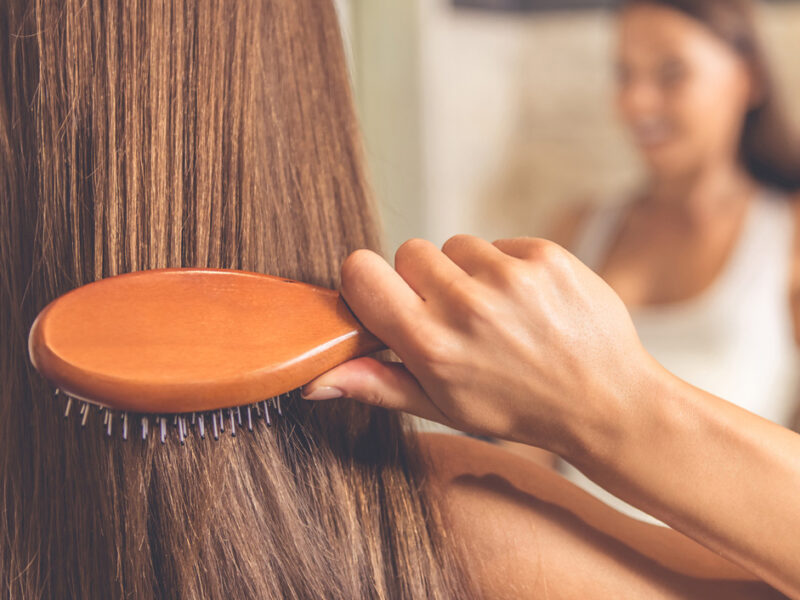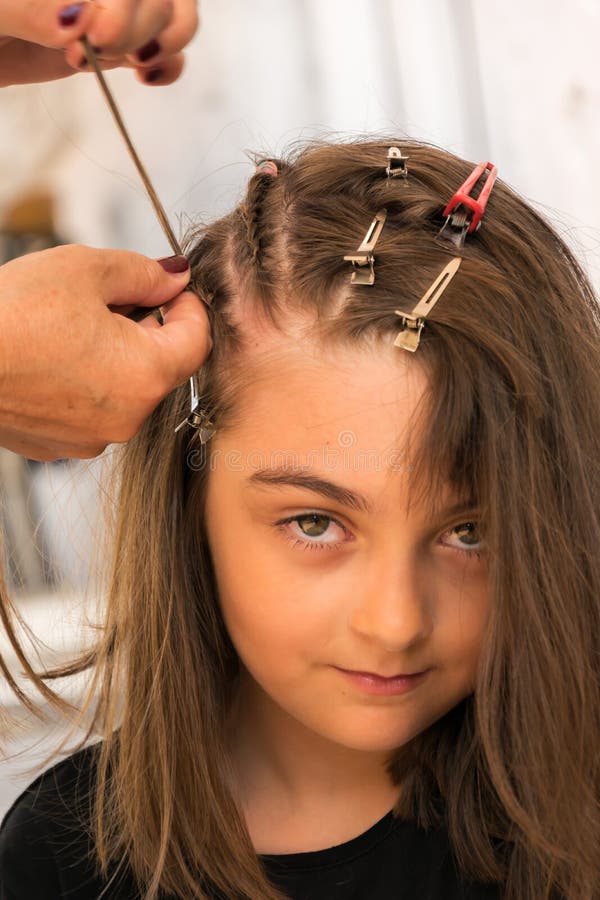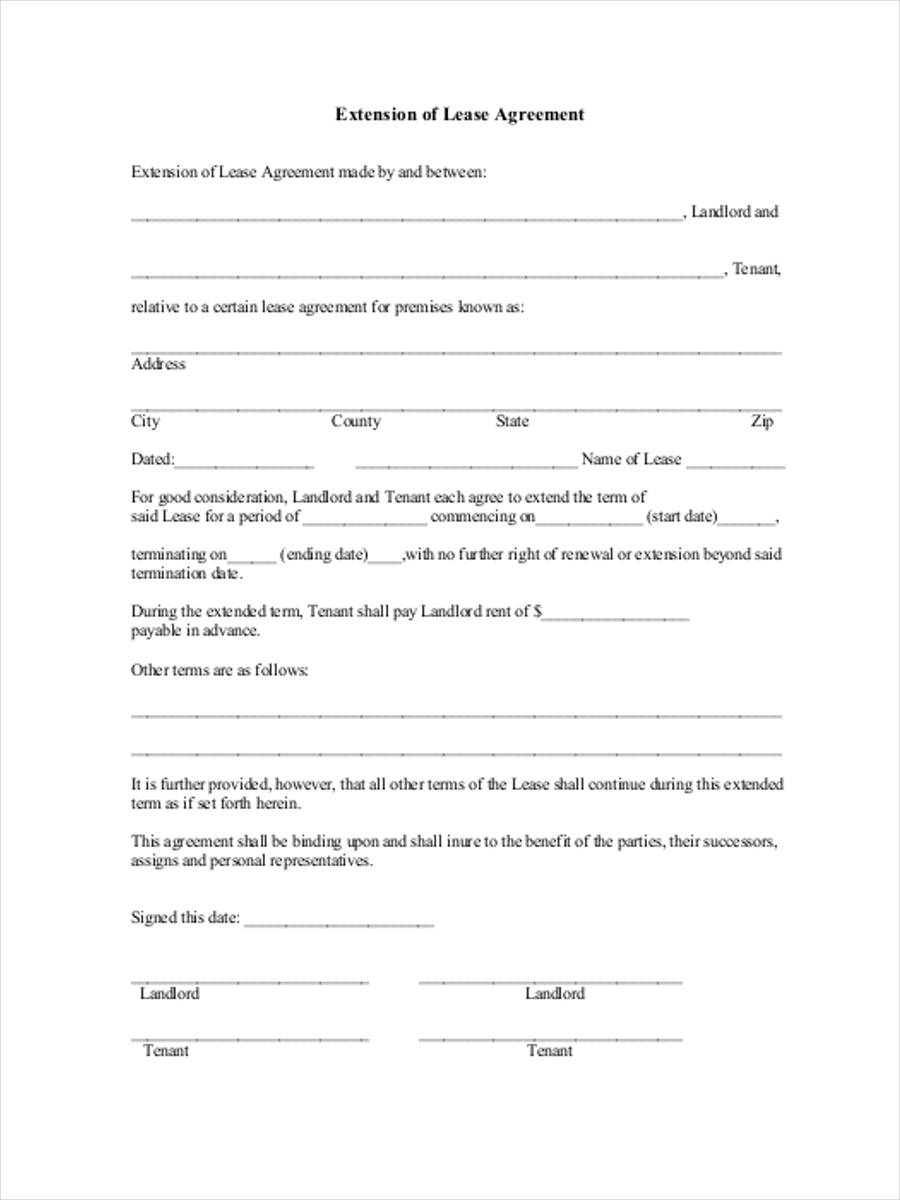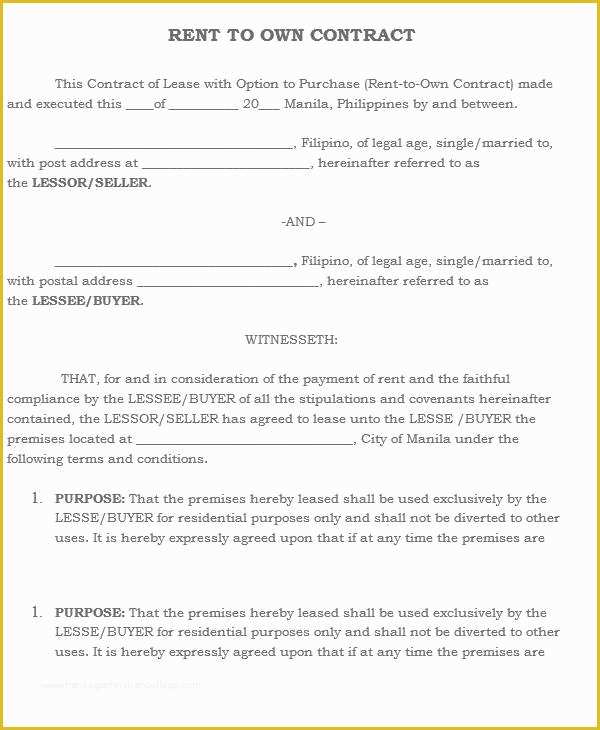Table Of Content

By keeping your hairbrush clean, you can help prevent scalp infections and keep your strands looking their best. To keep your hairbrush and comb clean longer, start getting into the habit of removing the hair from the bristles after every use. You can also opt for less product in your hair to prevent buildup in the brush or use a different brush or method for combing when your hair is dirty or oily. If you want to clean your hairbrush and comb more frequently, consider investing in a cleaning spray specific to your type of brush. The steps for cleaning a hairbrush or comb depend on what type of brush you are cleaning.
Rinse and dry
For those with longer hair, however, she recommends doing this more frequently. And if you use products, a sure sign that it’s time to clean you brush is if you start to see residue form on the bristles. Just like your skin, your scalp has bacteria, fungi and dead skin cells, says Dr. Julia Tzu, a triple board-certified dermatologist in New York City. In addition to strands of hair, brush bristles are magnets for lint, oil, and dead skin cells. After you've removed all of the hair, give your hairbrush a good washing to remove buildup.
How to clean hair brushes with vinegar and baking soda
13 Best Boar-Bristle Brushes 2024, According to Hairstylists - Allure
13 Best Boar-Bristle Brushes 2024, According to Hairstylists.
Posted: Sat, 02 Mar 2024 08:00:00 GMT [source]
If you have very long hair or use lots of styling products, you may need to clean the tools every two weeks. It's a good idea to remove the tangled hair around the bristles regularly, even if you don't do a thorough cleaning. You put in time and effort to style your hair and it deserves a squeaky clean hairbrush. If the bristles are buried in a tangle of shedded strands, your brush won't be as effective and you might find styling a challenge. Clean out the hair from your brush regularly as needed, but know that cleaning a hairbrush certainly isn't a daily task. Aguirre recommends completing the chore about once a month, and more often if you see a lot of product buildup or tend to shed a lot.
Clean Hair Brushes With Apple Cider Vinegar
The 20 Best Hairbrushes for Every Hair Type, According to Hair Care Experts - Real Simple
The 20 Best Hairbrushes for Every Hair Type, According to Hair Care Experts.
Posted: Thu, 29 Feb 2024 08:00:00 GMT [source]
If you're like Ree and the rest of the Drummonds, you couldn't be happier that cookout season is finally here. After all, spring and summer are about enjoying family time together, and dining al fresco is a major part of that! But before you plan an outdoor gathering with all your favorite BBQ recipes, you probably have to handle one chore you're absolutely dreading—and that's cleaning your grill grates. Is there anything messier or more difficult than scrubbing those filthy things? Okay, undoubtedly there is, but when you're up to your elbows in grime and grease, it sure doesn't feel like it. Bristles are an important factor when picking out a brush, but Hardges says you also want to take note of the handle because if it's not comfortable, guess what?
Try to use as little water as possible so as not to soak the brush. Wipe with a dry, clean cloth and leave to dry bristle-side down on a towel. Shop our full range of hairbrushes and combs to suit every hair type.
Our top picks for the best boar-bristle brushes in 2024:
Imagine that each time you use a hair product, it coats each strand. So when you use your brush to polish up your look after work, the brush also picks up residue from the products. It might sound icky, but with that feat of regeneration, lots of those dispelled bits end up in your hairbrush.
How Often to Clean Your Hairbrush
Squeeze your wet brush repeatedly, to remove any water that entered the cushioned part. “You definitely want to avoid water getting trapped inside of your brush as this could cause bacteria to grow,” Boss said. Don’t worry if there is some lingering moisture—anything you can’t squeeze out will evaporate. Just let the brush rest on a towel, bristle-side down, and it should dry out fine. If you’ve got a synthetic brush, place it in the soapy water, making sure the bristles are submerged. Brushes with wooden handles should never soak in water like their plastic counterparts.
Scrub with Baking Soda

Find a well-ventilated area in your home, grab a clean towel or cloth, and place the brush — bristles down — on the towel to air dry. FYI, it’s important to leave the brush facing down so that any excess water can run out. Malassezia, FYI, is a yeast that naturally forms in the body, but when the scalp and accompanying hair tools are not clean, this can cause an overgrowth of this yeast that can lead to an itchy, irritated scalp. Furthermore, depending upon your overall scalp health, there could be all sorts of miscellaneous things trapped in your hair and built up in your brush, such as fungus, according to Gaunitz. If you've ever had an itchy scalp, you might not have considered your dirty hairbrush as a possible cause.
How often should you clean your hairbrush?
Elevate your hair care routine (and learn how to clean your hair brushes) with a few of these simple hacks, below. If you have a natural bristle brush, be sure to wash it at least every few weeks. For synthetic bristles, you can give the brush a quick rinse after every use to be extra clean. If you use your brush daily, you may want to give it a deep cleaning once a week by soaking it in vinegar for 30 minutes.
People with coarse & curly hair may get more hair trapped in the brush quicker and therefore will need to clean their brush more often.” A general good rule of thumb is to clean your brush once a week, he says. For the sake of our hair health and overall hygiene, knowing how to clean hair brushes is a crucial part of any healthy hair regimen. As Bridgette Hill, a certified trichologist, explains it, brushing distributes sebum that is necessary for maintaining our scalp’s pH balance and keeping strands moisturized.
So give your grimy hairbrush some TLC with these 3 simple steps. Give the brush a rinse under warm water to get rid of any leftover soap or residue. A true classic, this caring shampoo is ultra gentle and very reasonably priced.
Our journalists combine independent research with (occasionally) over-the-top testing so you can make quick and confident buying decisions. Whether it’s finding great products or discovering helpful advice, we’ll help you get it right (the first time). This will vary, depending on how much you shed and what products you use. In general, you should be washing your brush at least every two weeks. But beyond a fresh start, purchasing a new brush does wonders for your 'do.
To make this process easier, Shelton suggests removing loose hair from the brush regularly, at least three to four times per week. She also advises those who use their brush quite often, or even share it with multiple people, use a sanitizing spray. Shelton DIYs this by using one part water and one part barbicide in a spray bottle and spritzing after each of her clients.














